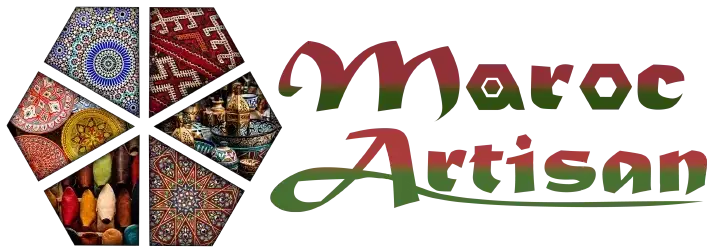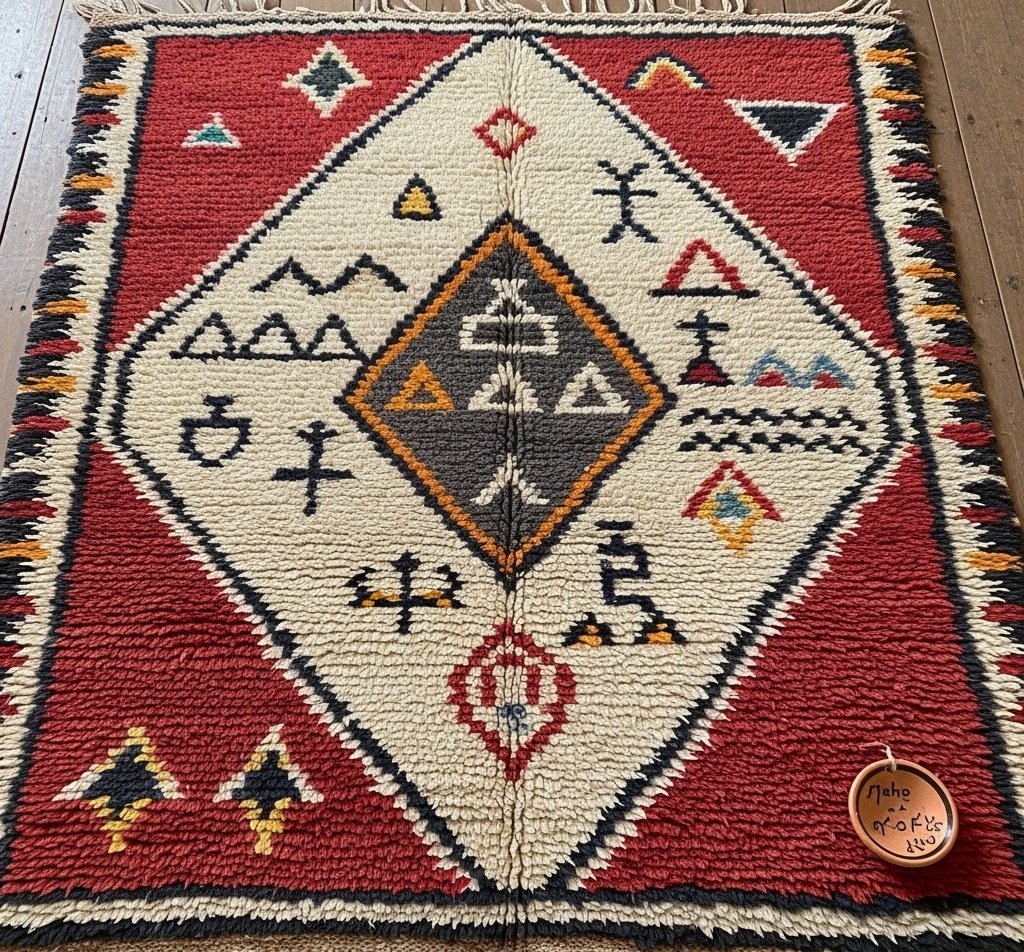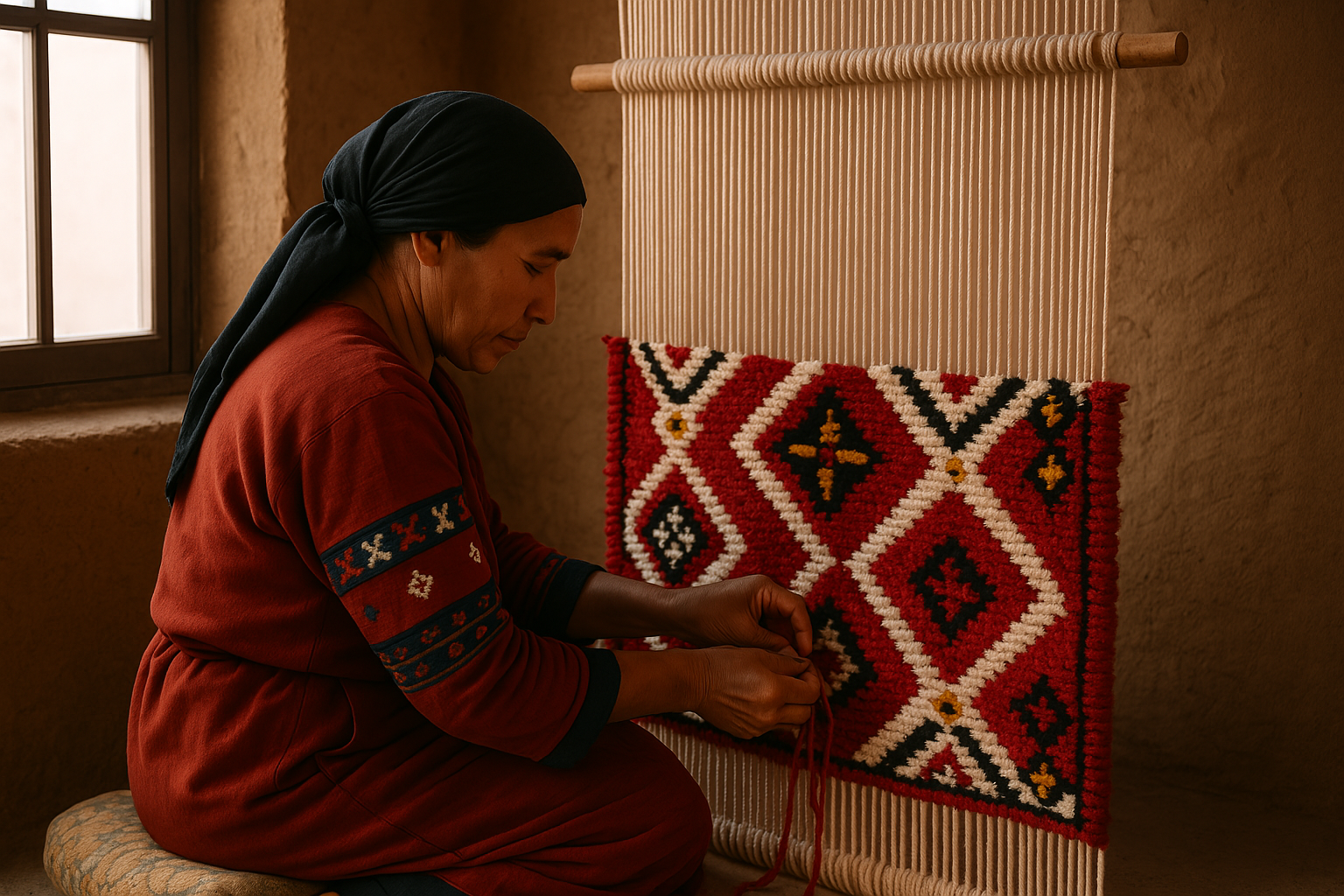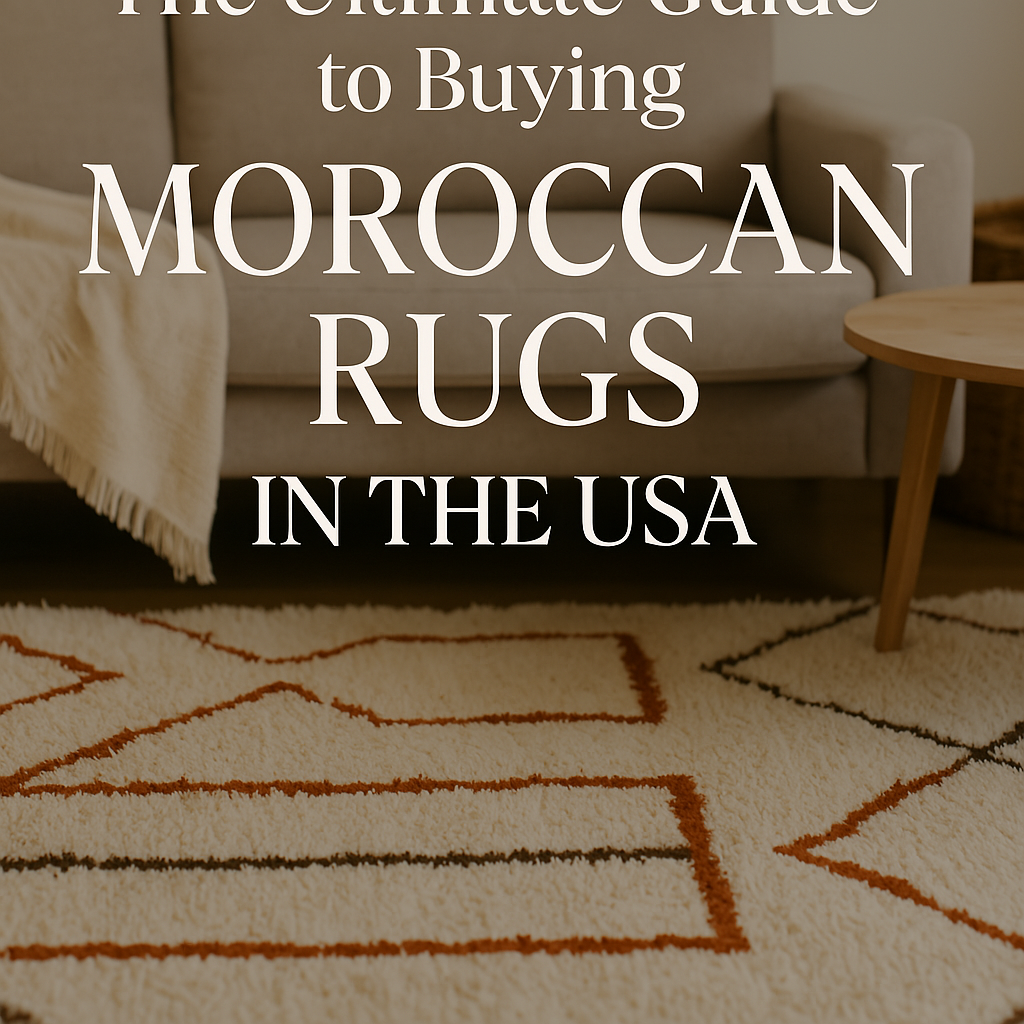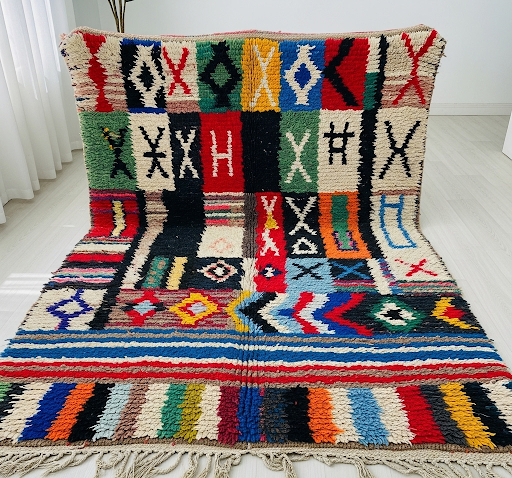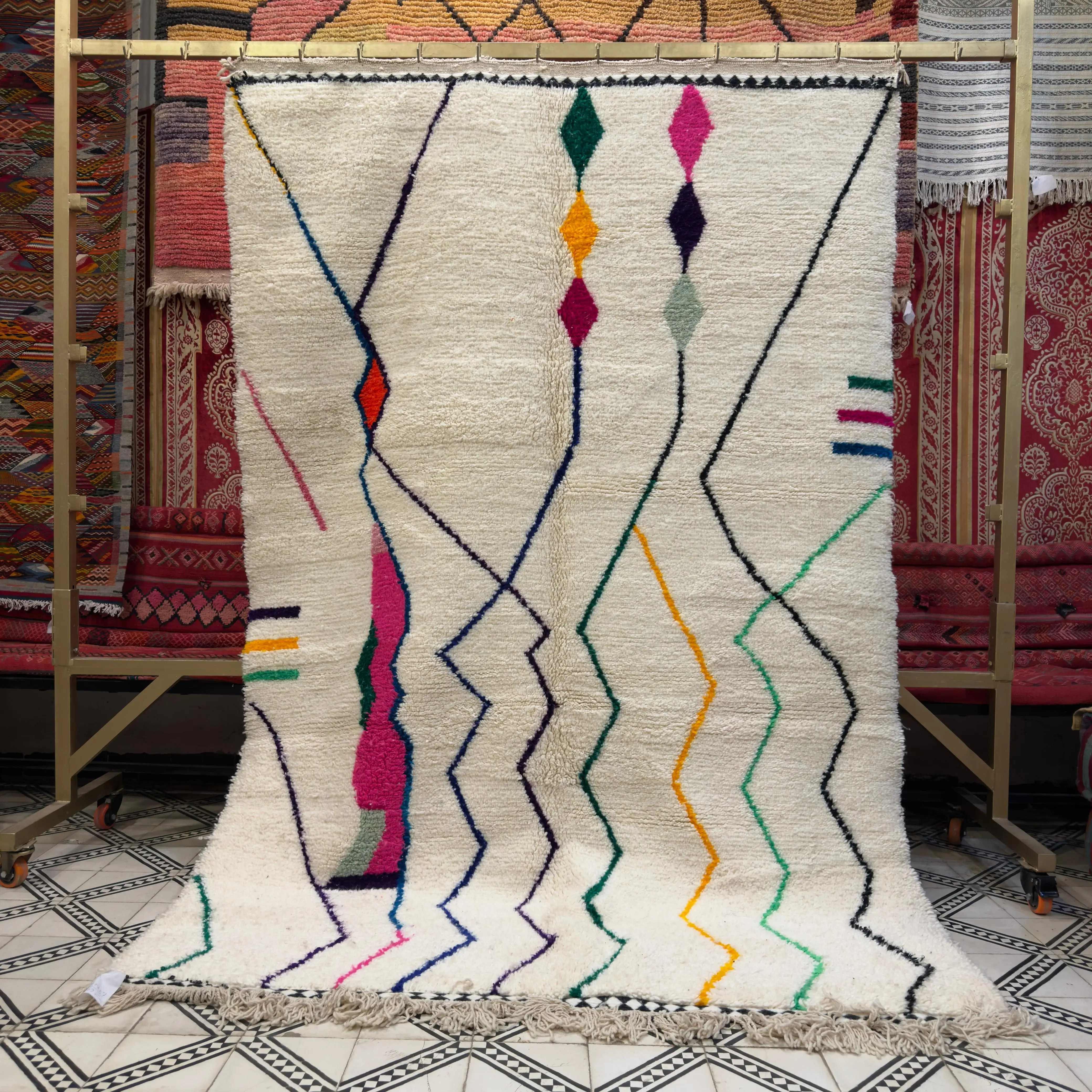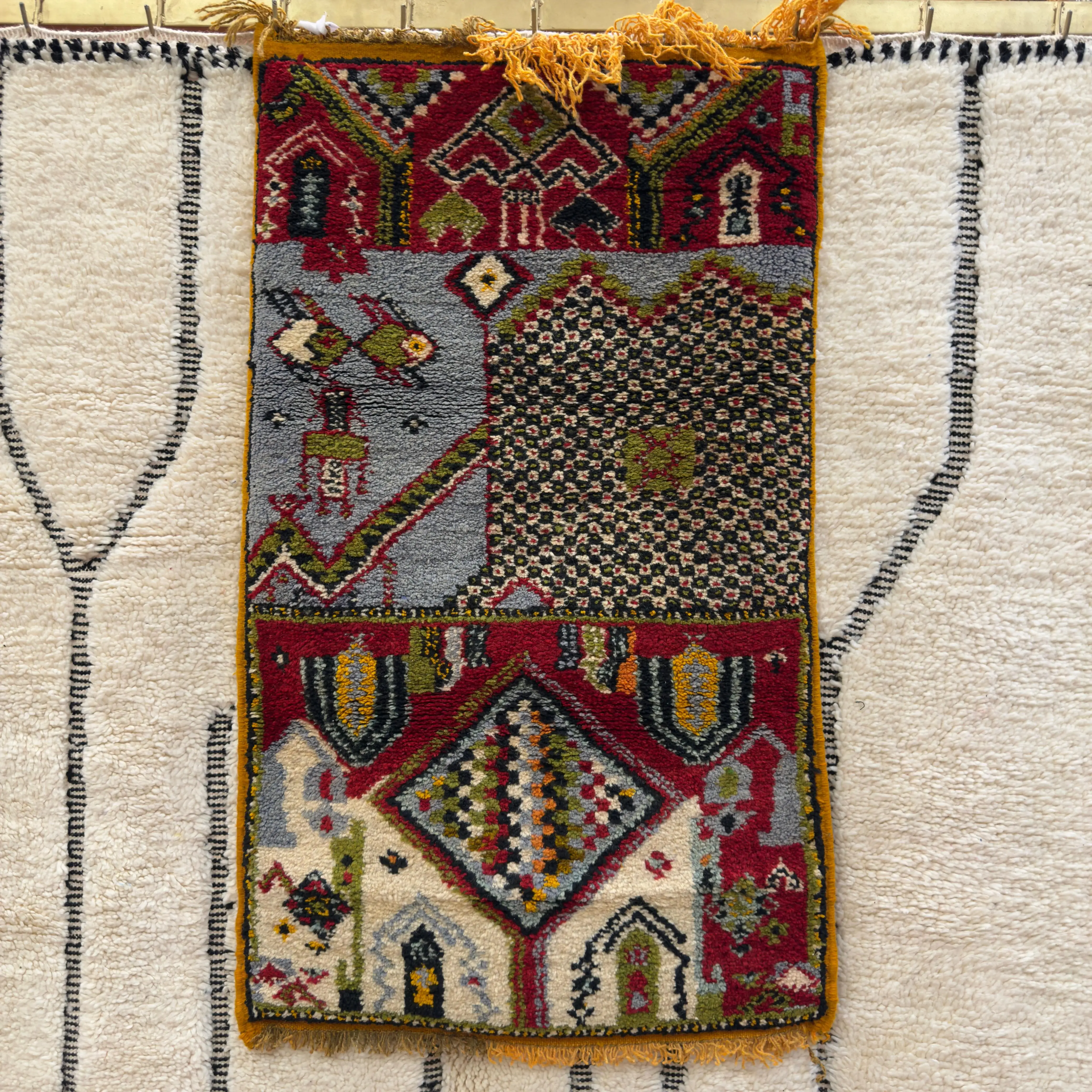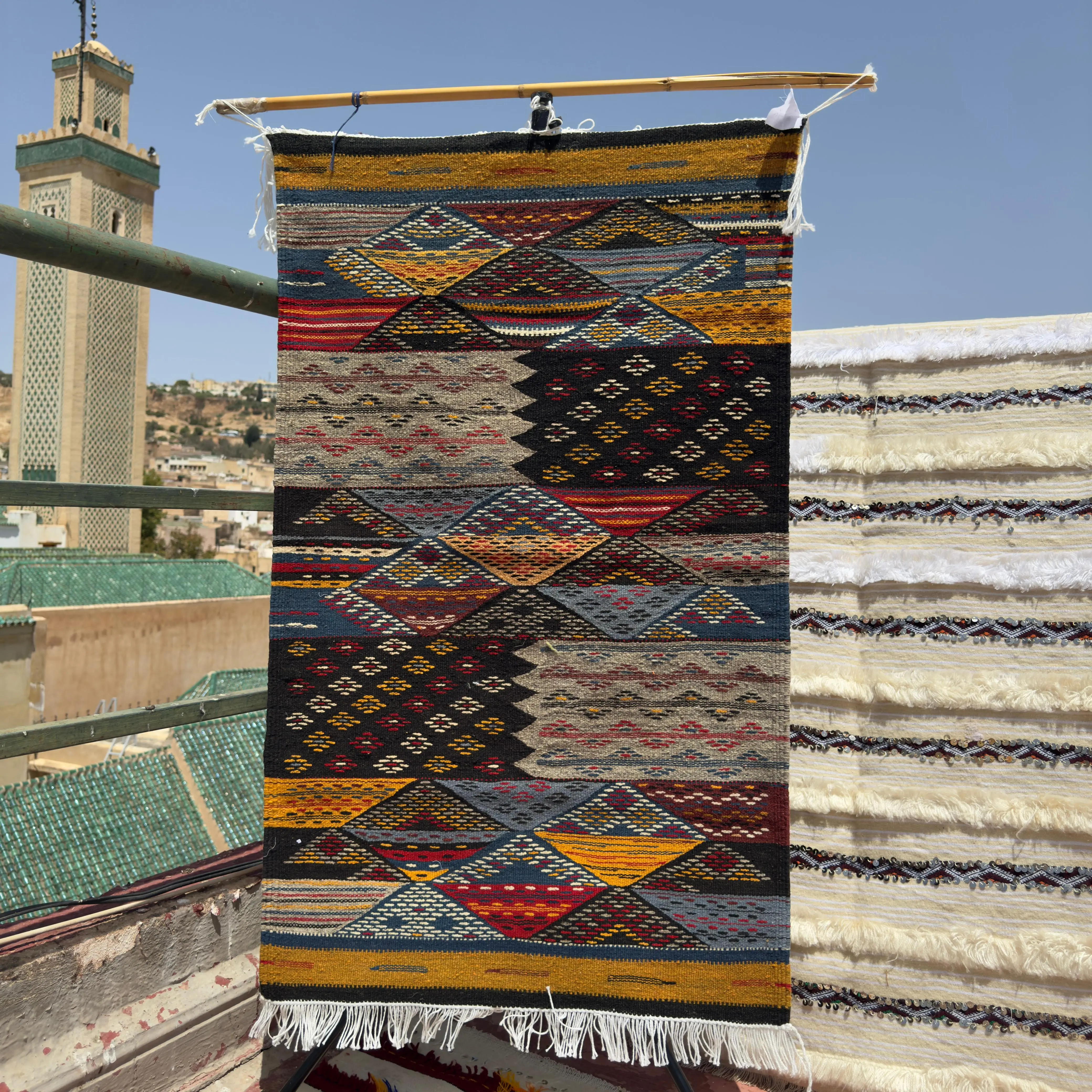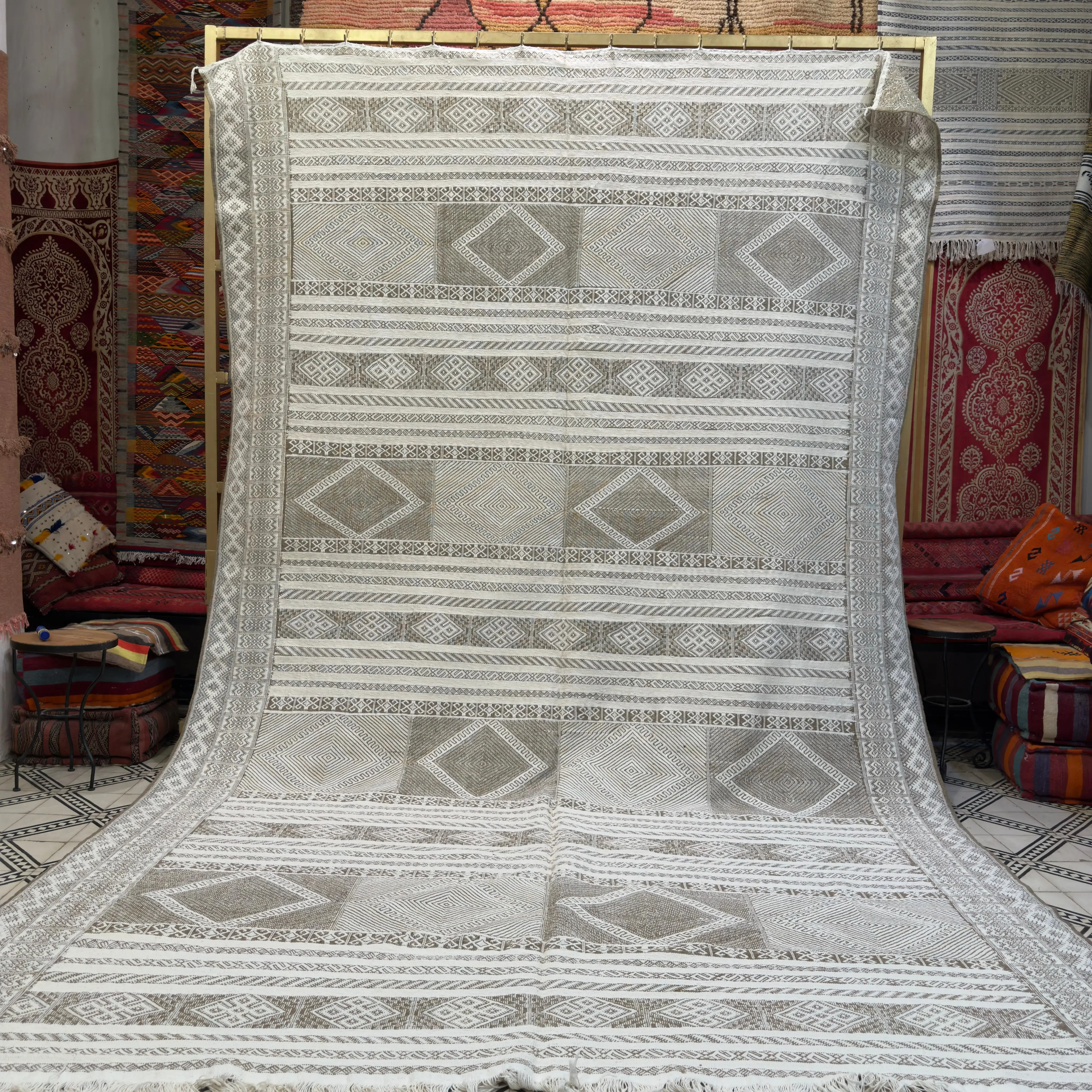To the untrained eye, a Moroccan Berber rug is a beautiful object of decor—a tapestry of intricate patterns and rich colors. But to understand its true depth is to learn a new language, one woven in wool and spoken in symbols. For centuries, the Berber (Amazigh) women of Morocco's Atlas Mountains have used their looms not just to create floor coverings, but to tell stories, express hopes, and document their lives.
These rugs are not random assortments of geometric shapes. They are a form of ancient, non-verbal communication, with each symbol carrying a specific meaning passed down through generations. This guide will help you look beyond the pattern and decode the hidden stories woven into these remarkable works of art.

The Woven Alphabet: Common Symbols and Their Meanings
The symbols found in Berber rugs are deeply connected to nature, daily life, spirituality, and the human experience. While interpretations can vary slightly from tribe to tribe, many symbols share a common meaning.
-
The Diamond: This is perhaps the most ubiquitous symbol in Berber weaving. A single diamond represents the woman or the womb and is a powerful symbol of fertility and womanhood. When diamonds are linked together in a chain, they often symbolize protection against the evil eye, with the shape of the diamond deflecting negative energy.
-
The Chevron and Zig-Zag: These angular, flowing lines almost always represent water, snakes, or the journey of life. Water is a precious, life-giving resource in many parts of Morocco, and the zig-zag pattern pays homage to its importance.
-
The "X" (The Weaver's Mark): A simple "X" symbol is often interpreted as the weaver's signature or a representation of the human form in harmony. It can signify the body, family, and the crossing of paths.
-
Barley and Seeds: A pattern resembling a checkerboard or a collection of small dots often symbolizes barley, seeds, and agriculture. This is a powerful charm for fertility, abundance, and a successful harvest.
-
The Berber Cross: This more complex symbol, often seen in the center of large area rugs, represents the "free man" (the meaning of Amazigh) and the four cardinal directions. It is a symbol of balance and one's place in the universe.
The Language of Color
Color is just as important as shape in telling a rug's story. The weavers used natural dyes derived from plants and minerals, and each color carries its own symbolic weight.
-
Red: Symbolizes strength, protection, and lifeblood.
-
Blue: Often from the indigo plant, it represents the sky, wisdom, and tranquility.
-
Yellow: Represents the sun, eternity, and the divine.
-
Green: A very significant color, representing peace, nature, paradise, and healing. A green area rug is not just a design choice; it's an intentional weaving of tranquility into the home.
-
White/Ivory: The natural color of the wool, it symbolizes purity, peace, and blessings.
-
Black: Can represent power, but is often used to outline and define other symbols, providing strength and protection to the design.
Reading the Rug as a Whole
A Berber rug should not be read like a dictionary, with each symbol having a single, isolated meaning. It is a holistic narrative. The weaver combines symbols and colors to create a personal story, a prayer, or a talisman for her family. A rug might tell the story of a marriage, document a pregnancy, or serve as a protective charm for the home. The larger the rug, the more complex the story can be, with large area rugs often serving as detailed family chronicles.
Conclusion: Owning a Piece of History
When you bring a Moroccan Berber rug into your home, you are doing more than just decorating. You are becoming the custodian of a unique, handcrafted story. You are preserving a tradition and honoring the life and artistry of the woman who wove her experiences into its very fibers. By understanding the language of these symbols, you can appreciate your rug not just for its beauty, but for its soul.
Pour un œil non averti, un tapis berbère marocain est un bel objet de décoration — une tapisserie de motifs complexes et de couleurs riches. Mais pour comprendre sa véritable profondeur, il faut apprendre une nouvelle langue, une langue tissée dans la laine et parlée en symboles. Pendant des siècles, les femmes berbères (Amazighes) des montagnes de l'Atlas au Maroc ont utilisé leurs métiers à tisser non seulement pour créer des revêtements de sol, mais aussi pour raconter des histoires, exprimer des espoirs et documenter leur vie.
Ces tapis ne sont pas des assortiments aléatoires de formes géométriques. Ils sont une forme de communication ancienne et non verbale, chaque symbole ayant une signification spécifique transmise de génération en génération. Ce guide vous aidera à regarder au-delà du motif et à décoder les histoires cachées tissées dans ces œuvres d'art remarquables.

L'alphabet tissé : Symboles courants et leurs significations
Les symboles que l'on trouve dans les tapis berbères sont profondément liés à la nature, à la vie quotidienne, à la spiritualité et à l'expérience humaine. Bien que les interprétations puissent varier légèrement d'une tribu à l'autre, de nombreux symboles partagent une signification commune.
-
Le losange : C'est peut-être le symbole le plus omniprésent dans le tissage berbère. Un seul losange représente la femme ou l'utérus et est un puissant symbole de fertilité et de féminité. Lorsque les losanges sont liés en chaîne, ils symbolisent souvent la protection contre le mauvais œil, la forme du losange détournant l'énergie négative.
-
Le chevron et le zigzag : Ces lignes angulaires et fluides représentent presque toujours l'eau, les serpents ou le voyage de la vie. L'eau est une ressource précieuse et vitale dans de nombreuses régions du Maroc, et le motif en zigzag rend hommage à son importance.
-
Le "X" (La marque de la tisserande) : Un simple symbole "X" est souvent interprété comme la signature de la tisserande ou une représentation de la forme humaine en harmonie. Il peut signifier le corps, la famille et le croisement des chemins.
-
L'orge et les graines : Un motif ressemblant à un damier ou à une collection de petits points symbolise souvent l'orge, les graines et l'agriculture. C'est un puissant talisman pour la fertilité, l'abondance et une récolte réussie.
-
La croix berbère : Ce symbole plus complexe, souvent vu au centre des grands tapis, représente l'« homme libre » (la signification d'Amazigh) et les quatre points cardinaux. C'est un symbole d'équilibre et de la place de chacun dans l'univers.
Le langage des couleurs
La couleur est tout aussi importante que la forme pour raconter l'histoire d'un tapis. Les tisserandes utilisaient des colorants naturels dérivés de plantes et de minéraux, et chaque couleur porte son propre poids symbolique.
-
Rouge : Symbolise la force, la protection et le sang de la vie.
-
Bleu : Souvent issu de la plante d'indigo, il représente le ciel, la sagesse et la tranquillité.
-
Jaune : Représente le soleil, l'éternité et le divin.
-
Vert : Une couleur très significative, représentant la paix, la nature, le paradis et la guérison. Un tapis vert n'est pas seulement un choix de design ; c'est un tissage intentionnel de la tranquillité dans la maison.
-
Blanc/Ivoire : La couleur naturelle de la laine, elle symbolise la pureté, la paix et les bénédictions.
-
Noir : Peut représenter le pouvoir, mais est souvent utilisé pour souligner et définir d'autres symboles, apportant force et protection au design.
Lire le tapis dans son ensemble
Un tapis berbère ne doit pas être lu comme un dictionnaire, où chaque symbole a une signification unique et isolée. C'est un récit holistique. La tisserande combine des symboles et des couleurs pour créer une histoire personnelle, une prière ou un talisman pour sa famille. Un tapis peut raconter l'histoire d'un mariage, documenter une grossesse ou servir de charme protecteur pour la maison. Plus le tapis est grand, plus l'histoire peut être complexe, les grands tapis servant souvent de chroniques familiales détaillées.
Conclusion : Posséder un morceau d'histoire
Lorsque vous introduisez un tapis berbère marocain dans votre maison, vous faites plus que simplement décorer. Vous devenez le gardien d'une histoire unique et artisanale. Vous préservez une tradition et honorez la vie et le talent artistique de la femme qui a tissé ses expériences dans ses fibres mêmes. En comprenant le langage de ces symboles, vous pouvez apprécier votre tapis non seulement pour sa beauté, mais aussi pour son âme.
Para un ojo no entrenado, una alfombra bereber marroquí es un hermoso objeto de decoración — un tapiz de patrones complejos y colores ricos. Pero para comprender su verdadera profundidad, es necesario aprender un nuevo idioma, uno tejido en lana y hablado en símbolos. Durante siglos, las mujeres bereberes (Amazigh) de las montañas del Atlas en Marruecos han utilizado sus telares no solo para crear revestimientos para el suelo, sino también para contar historias, expresar esperanzas y documentar sus vidas.
Estas alfombras no son surtidos aleatorios de formas geométricas. Son una forma de comunicación antigua y no verbal, donde cada símbolo tiene un significado específico transmitido de generación en generación. Esta guía te ayudará a mirar más allá del patrón y a descifrar las historias ocultas tejidas en estas notables obras de arte.

El alfabeto tejido: Símbolos comunes y sus significados
Los símbolos que se encuentran en las alfombras bereberes están profundamente ligados a la naturaleza, la vida cotidiana, la espiritualidad y la experiencia humana. Aunque las interpretaciones pueden variar ligeramente de una tribu a otra, muchos símbolos comparten un significado común.
-
El rombo: Este es quizás el símbolo más omnipresente en el tejido bereber. Un solo rombo representa a la mujer o el útero y es un poderoso símbolo de fertilidad y feminidad. Cuando los rombos están unidos en una cadena, a menudo simbolizan la protección contra el mal de ojo, ya que la forma del rombo desvía la energía negativa.
-
El chevrón y el zigzag: Estas líneas angulares y fluidas casi siempre representan el agua, las serpientes o el viaje de la vida. El agua es un recurso precioso y vital en muchas partes de Marruecos, y el patrón en zigzag rinde homenaje a su importancia.
-
La "X" (La marca de la tejedora): Un simple símbolo "X" se interpreta a menudo como la firma de la tejedora o una representación de la forma humana en armonía. Puede significar el cuerpo, la familia y el cruce de caminos.
-
La cebada y las semillas: Un patrón que se asemeja a un tablero de ajedrez o a una colección de pequeños puntos simboliza a menudo la cebada, las semillas y la agricultura. Es un poderoso talismán para la fertilidad, la abundancia y una cosecha exitosa.
-
La cruz bereber: Este símbolo más complejo, que se ve a menudo en el centro de las grandes alfombras, representa al «hombre libre» (el significado de Amazigh) y los cuatro puntos cardinales. Es un símbolo de equilibrio y del lugar de cada uno en el universo.
El lenguaje de los colores
El color es tan importante como la forma para contar la historia de una alfombra. Las tejedoras utilizaban tintes naturales derivados de plantas y minerales, y cada color tiene su propio peso simbólico.
-
Rojo: Simboliza la fuerza, la protección y la sangre de la vida.
-
Azul: A menudo procedente de la planta de índigo, representa el cielo, la sabiduría y la tranquilidad.
-
Amarillo: Representa el sol, la eternidad y lo divino.
-
Verde: Un color muy significativo, que representa la paz, la naturaleza, el paraíso и la curación. Una alfombra verde no es solo una elección de diseño; es un tejido intencional de tranquilidad en el hogar.
-
Blanco/Marfil: El color natural de la lana, simboliza la pureza, la paz y las bendiciones.
-
Negro: Puede representar el poder, pero a menudo se utiliza para delinear y definir otros símbolos, aportando fuerza y protección al diseño.
Leer la alfombra en su conjunto
Una alfombra bereber no debe leerse como un diccionario, donde cada símbolo tiene un significado único y aislado. Es una narrativa holística. La tejedora combina símbolos y colores para crear una historia personal, una oración o un talismán para su familia. Una alfombra puede contar la historia de un matrimonio, documentar un embarazo o servir como un amuleto protector para el hogar. Cuanto más grande es la alfombra, más compleja puede ser la historia, y las grandes alfombras a menudo sirven como crónicas familiares detalladas.
Conclusión: Poseer un pedazo de historia
Cuando introduces una alfombra bereber marroquí en tu hogar, haces más que simplemente decorar. Te conviertes en el custodio de una historia única y artesanal. Preservas una tradición y honras la vida y el arte de la mujer que tejió sus experiencias en sus propias fibras. Al comprender el lenguaje de estos símbolos, puedes apreciar tu alfombra no solo por su belleza, sino también por su alma.
